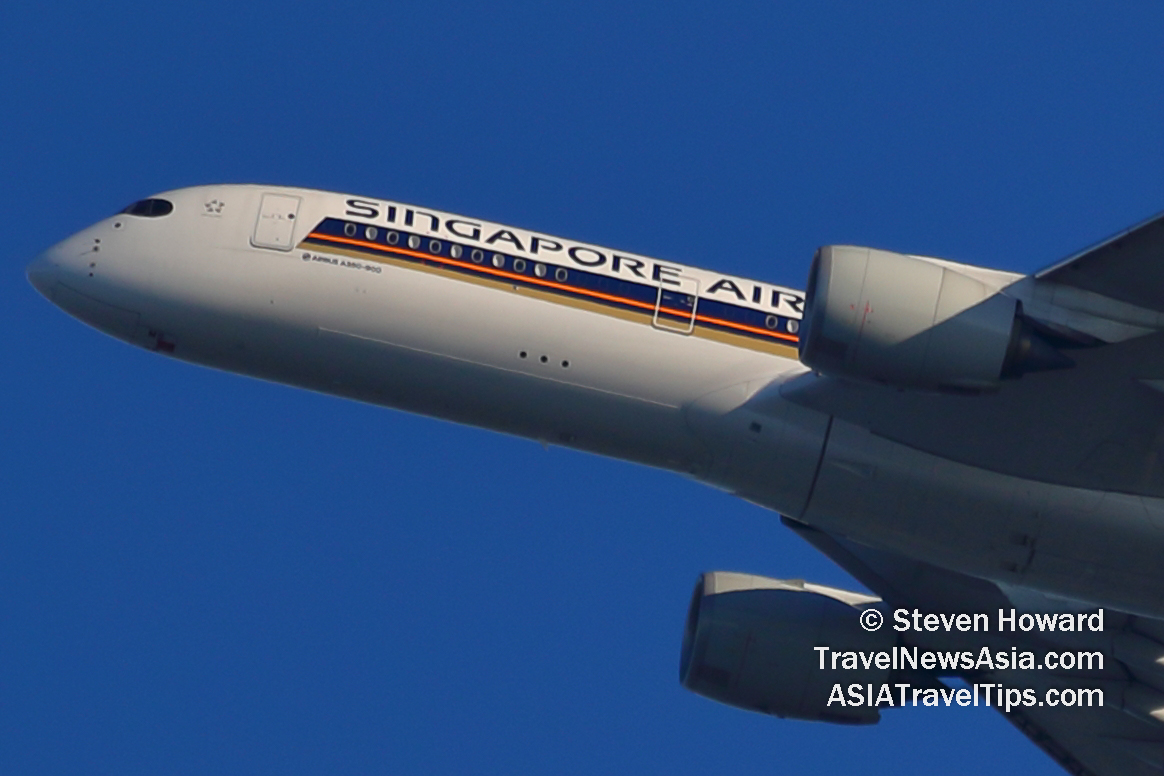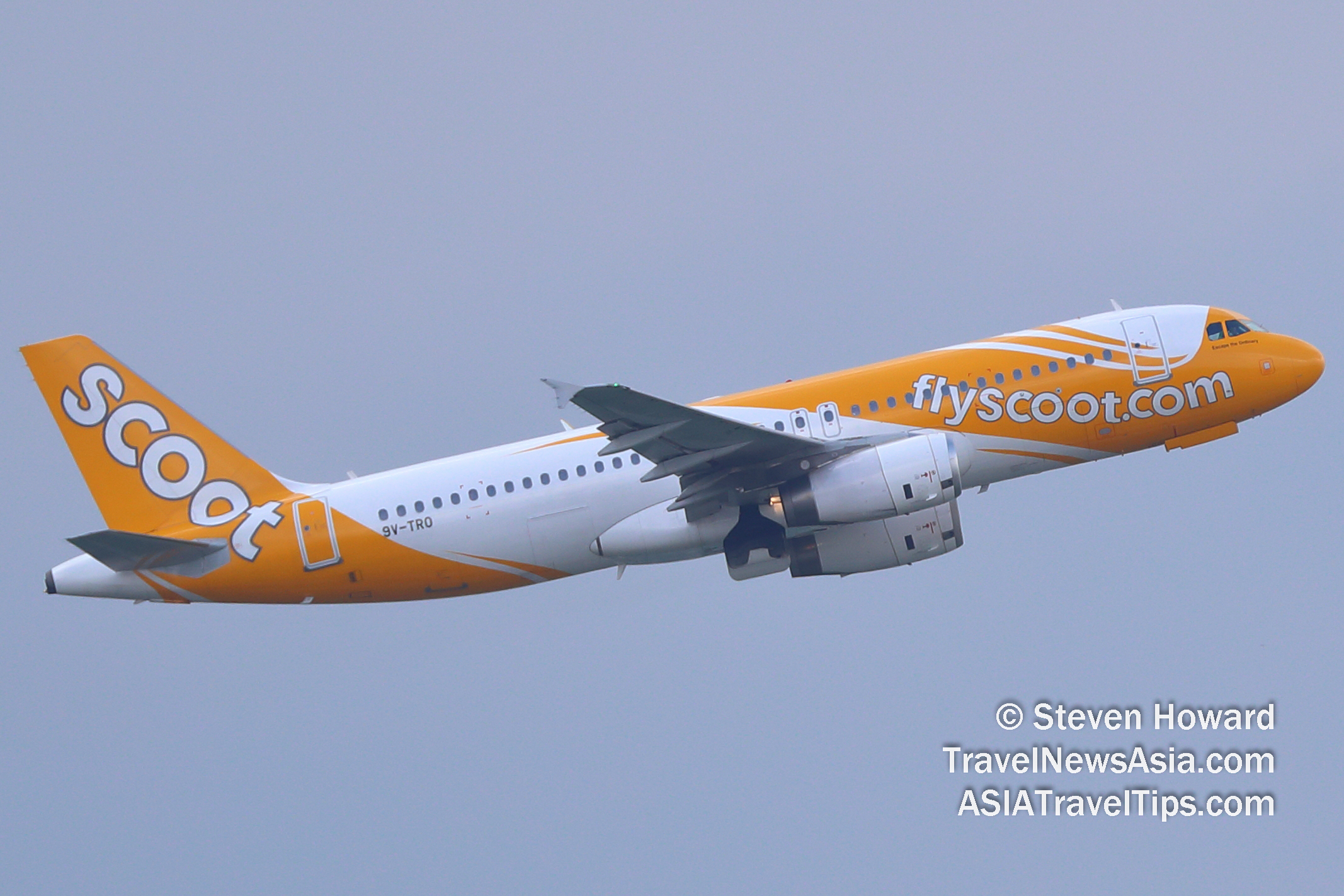|
Singapore Airlines has reported a Q3 nett loss of
S$142 million (approximately US$106.3 million).
International air travel demand remained severely
constrained in the quarter, as border controls and travel
restrictions continued to be in place in many countries amid new
waves of the COVID19 infection. As a result, the SIA Group�s
passenger carriage shrank 97.6% year-on-year. However, when
compared to the previous quarter, passenger carriage grew 44.8% on
the back of a 90.8% increase in capacity for the third quarter.
Group revenue fell $3,404 million (-76.1%)
year-on-year to $1,067 million during the third quarter, as all
three passenger airlines within the Group recorded a sharp drop in
passenger flown revenue due to low traffic. This was partially
offset by improvements in cargo flown revenue, as the global
airfreight capacity crunch continued to provide strong support for
both load factors and yields. In response to the continued strong
demand for pharmaceutical and e-commerce shipments, and an uptick
in general cargo demand, SIA added capacity by stepping up the
frequency of passenger aircraft operating cargo-only flights and
through the resumption of more passenger services. The utilisation
of the freighter fleet was also maximised to deliver more cargo
capacity.

Group expenditure was down $2,624 million (-65.2%)
from last year to $1,398 million. Non-fuel expenditure fell
significantly year-on-year, by $1,540 million (-54.7%), on the
back of cost-saving initiatives such as capacity cuts and
staff-related measures, as well as government support schemes. Net
fuel cost declined $933 million (-77.3%) to $274 million as
capacity cuts and lower fuel prices reduced fuel cost before
hedging. A net gain of $63 million was recorded for the quarter in
relation to fuel hedging and fuel derivatives, comprising fuel
hedging losses of $88 million, a fuel hedging ineffectiveness loss
of $36 million (arising from a further downward revision to the
recovery trajectory) and fair value gains of $187 million on fuel
derivatives that had earlier been deemed to be ineffective hedges.
As a result, the group registered an operating loss of $331
million for the quarter, a $780 million reversal from an operating
profit of $449 million last year.
For the quarter ended 31 December 2020, the group
reported a net loss of $142 million, a deterioration of $457
million against last year. This was primarily driven by the weaker
operating performance, partially offset by a swing from tax
expense to tax credit.
April to December 2020 � Profit and Loss
Group operating loss for the nine months to
December 2020 was $2,194 million, a reversal of $3,056 million
from the profit of $862 million for the same period last year, as
travel demand deteriorated sharply since the start of the
financial year.
Revenue plunged $10,094 million (-78.9%) due to
weaker passenger flown revenue arising from a 98.5% drop in
traffic. This was partially offset by higher cargo revenue as
movements of general cargo and pharmaceuticals, as well as strong
e-commerce demand, kept yields high throughout the nine months.
Expenditure fell $7,038 million (-59.0%). Net fuel
cost fell $2,906 million (-81.7%) as the reduction in volume
uplifted lowered fuel cost before hedging to $405 million, a
decline of $3,219 million (-88.8%) from last year.
This was partially offset by fuel hedging losses
of $245 million, a swing from fuel hedging gain of $68 million
last year. Due to downward revisions in the recovery trajectory,
expected fuel consumption was reduced, resulting in the
recognition of a $497 million loss in ineffective fuel hedges.
Partially offset by fair value gains of $85
million, mark-to-market losses for the nine months stood at $412
million. Similarly, non-fuel expenditure was down $4,544 million
(-54.2%) to $3,833 million, attributable to various cost-saving
initiatives and government support schemes.
In addition to the weaker operating performance,
there were also other non-cash items recorded during the first
nine months, including an impairment charge of $1,333 million on
the carrying value of older generation aircraft, a $127 million
charge from the liquidation of NokScoot, and a $170 million
write-down of goodwill recorded when SIA first gained control of
Tiger Airways in October 2014. As a result, the group swung into a
$3,609 million net loss position for the nine months ended 31
December 2020 compared to the $520 million net profit a year ago.
Q3 2020/21 � Balance Sheet
As at 31 December 2020, the group�s shareholders�
equity was $15.7 billion, an increase of $6.3 billion as compared
to 31 March 2020. Cash and bank balances saw an increase of $4.4
billion, rising to $7.1 billion, while total debt balances
increased by $0.4 billion to $12.2 billion due to the drawdown of
new debt facilities.
Consequently, the group�s debt-equity ratio fell
from 1.27 times to 0.78 times. In the first nine months of the
financial year, SIA increased its liquidity by approximately $12.7
billion. In December 2020, SIA closed a five-year convertible bond
issuance for $850 million and a private placement of 10-year Notes
that raised $500 million.
Singapore Airlines' Fleet and
Network
The group's fleet currently consists of 185
passenger and cargo aircraft. The passenger network is currently
supported by about 64 aircraft and all seven freighters are fully utilised,
whilst around 24 passenger aircraft are deployed on
cargo-only services. The group has parked 123 aircraft, including the 33
surplus aircraft that were impaired in the first half. More
aircraft will be re-introduced into the group's operating fleet as the
network gradually expands to match opportunities for re-opening.

During the quarter, the group gradually expanded
its operations by reinstating services to key cities as well as
mounting additional frequencies to existing destinations. At the
end of December 2020, SIA served 38 destinations including
Singapore, up from 31 at the end of September 2020. SilkAir
increased the destinations served to eight, up from six, while
Scoot�s network remained unchanged with 17 destinations. By the
end of December, the group�s passenger network covered 54
destinations including Singapore, compared to 43 three months ago.
The group�s cargo network comprises 66 destinations (including
Singapore) as at 31 December 2020, up from 62 as at 30 September
2020.
From January 2021, SIA has reinstated services to
Dubai, Moscow and Munich, while Phuket will be reinstated as a
SilkAir destination in February 2021. From
4 March 2021, Phuket
will be transferred from SilkAir to SIA. Based on current
schedules, as of end-April 2021, the group�s total passenger
capacity is expected to be at around 25% of pre-COVID19 levels, and
we expect to serve around 45% of the points that we flew to before
the crisis.
SilkAir, Fund-Raising and
Sale-Leaseback
The integration of SilkAir�s narrowbody operations
with Singapore Airlines will begin on 4 March 2021, when the first
SIA 737-800 NG aircraft operates on the service to Phuket.
Further to the fund-raising efforts in the first
nine months of the year, SIA also issued its first USD-denominated
bond in January 2021 raising US$500 million (or S$666 million
equivalent). To-date, SIA has successfully raised approximately
$13.3 billion in additional liquidity since the beginning of the
financial year.
Discussions on sale-and-leaseback transactions are
at an advanced stage. SIA continues to have access to more than
$2.1 billion in committed credit lines, along with the option to
raise up to $6.2 billion in additional mandatory convertible bonds
before the Annual General Meeting in July 2021.
Outlook
The resurgence of COVID19 infections as well as
the spread of more transmissible variants of the virus continue to
weigh on international air travel, as border controls and travel
restrictions tighten in many countries. Nonetheless, in line with
Singapore�s progressive re-opening, the group expects to see a
measured expansion of the passenger network over the coming
months.
Airfreight capacity remains constrained due to the
steep reduction in passenger flights, and this has affected the
bellyhold cargo capacity worldwide. While cargo demand has tapered
off after the traditional year-end peak period, strong
fundamentals and healthy Purchasing Managers� Index readings
across many key export economies will continue to support cargo
demand in the coming months. Furthermore, as the production of
COVID19 vaccine ramps up, SIA Cargo is looking to capture its
share of the traffic to Asia and the Southwest Pacific region.
See latest
Travel Industry News,
Video
Interviews,
Podcasts
and other
news regarding:
COVID19,
Singapore Airlines,
Changi,
Singapore.
|
Headlines: |
|
|
